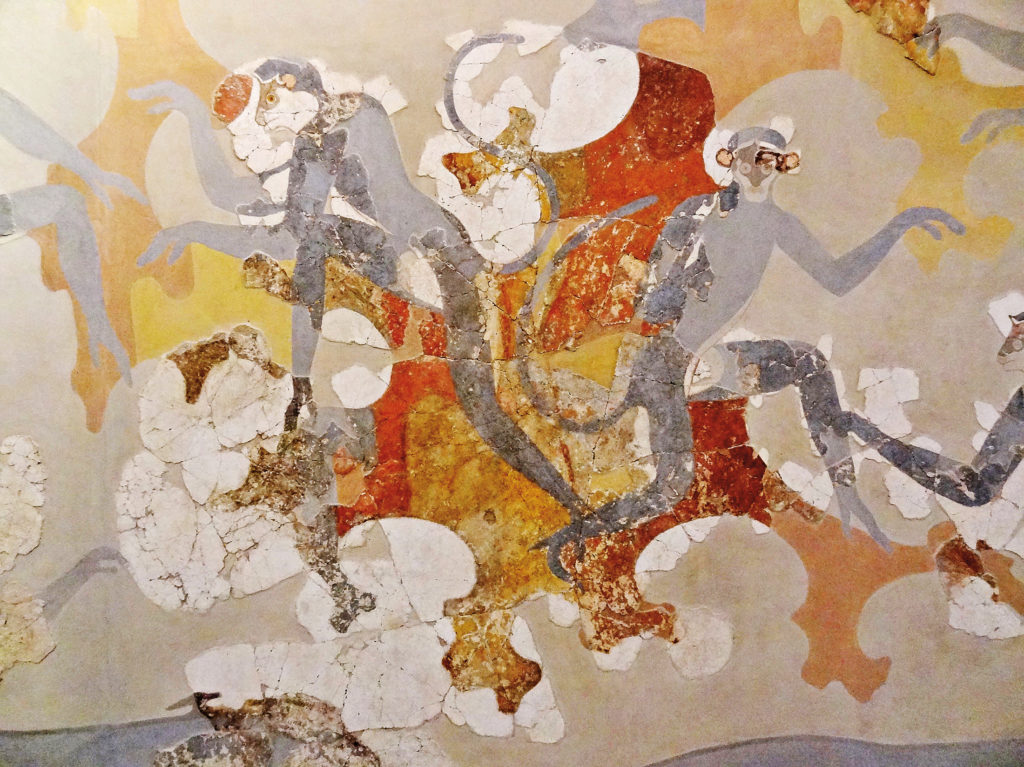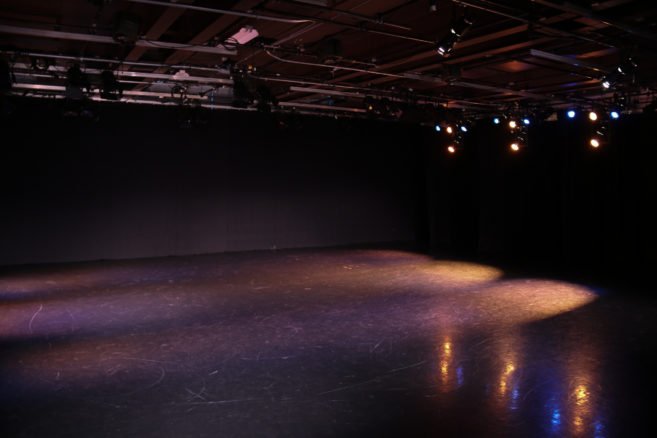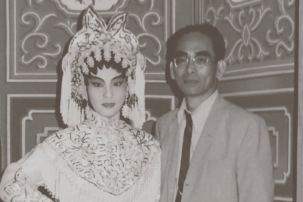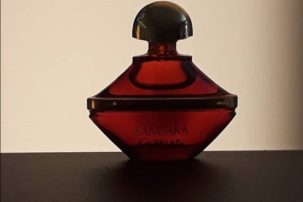I’m writing this in Skowhegan, Maine, at this residency that is, like, famous and stuff. There is a fresco shop here; not a dusty, unused remnant of another time, but a vital studio run with a mind to critical contemporary practice. On the second evening of the residency, in a cavernous barn lined with frescoes by American art heroes, Oscar Rene Cornejo gives a lecture about the medium. What is taught here is buon fresco. True fresco. Successively finer mixtures of sand and slaked lime are applied to a prepared wall over days or weeks. When the final coat is applied, pigment is painted on immediately, while the lime is fresh. The pigment has no binder in it—it is just pure colour mulled with water. As the lime sets, a crystalline structure forms around the pigment molecules, locking them into the wall. The lime slowly calcifies back into rock, and the painting becomes one with the wall. This is why frescoes can remain for hundreds and sometimes thousands of years.
I studied painting (among other things) in Montreal in the late ’90s and early ’00s. Painting was in a deep coma then: assumed non compos mentis. It was considered unintellectual, uncritical, bound to the dirty market; a patriarchal, mute, stultified form. In Canada at the time figuration or narrative painting was quickly dismissed by granting juries, artist-run centres and contemporary art museums. The rest of the global art world was just beginning to look seriously at the likes of Luc Tuymans and Peter Doig, Lisa Yuskavage and Jenny Saville, Cecily Brown and Marlene Dumas.
Last week I worked up a fresco on a didactic wall. It was very frustrating. It needs a feather-light touch or the plaster starts to gum up and fight back. It was by turns like watercolour, then gouache, then acrylic, then oil, and in between times, it felt like nothing was working at all. Then there emerged what is called “the golden hour,” where it could act like all the media at once, and you could feel the wall beginning to accept the paint with tenderness IF, IF I let myself listen to the wall and didn’t force it to behave by the rules I already understood. This all has to be done in a scant two hours. If I wait, the wall will turn its back and the pigment will not set, it will fall as dust.
When I think of those school days in the ’90s I think of video and photography now, being so mired in genre, (albeit small) history and straight-up shopping. People are just beginning to break the medium—to understand that breaking it is not just about making hybrid microgenres, that a filter does not suffice, that it is a process more granular and often violent. Now! That! Is! A! Tight! Suit!
Oscar begins to describe the spaces in which fresco independently emerged all over the world. I am so surprised and delighted by the images. Here we see frescoes in India, Ethiopia, all over Meso-America, Egypt, Tibet, and yes, in Greece and Italy. The styles and modes are radically different, from the massive pornographic frescoes buried under ash in Pompeii, to the Buddhist narrative tablets in mountain caves in the Himalayas, to the elaborate polished plasters in Rajasthan called araish, to the earliest Coptic churches in Ethiopia, to modern social realism in the Americas. They were almost always based on religious or folk narratives. Although many ancient frescoes have been destroyed outright—as in Tibet by the Chinese or in Latin America by reckless colonial archaeological practices—their fragments remain, often difficult to completely erase or poach as colonial spoil. Oscar talks about the restoration of the Sistine Chapel. I suspect that Michelangelo did not expect those paintings to be viewed under artificial interior light, and the current Disney theme-park colours must be miles away from the artist’s vision of a candlelit interior.
It has become a touch clearer these past few years that the late-capitalist monster is not a picky eater, that there is no purity possible. Even in Canada the sanctimony has diminished around materiality and narrative. Even, oh horrors, for painting. For me, the appeal with painting was contrarian. I have always liked to do the thing that is not the easy, cool thing, and anyway, when something has already been broken a million, million different ways—far more than can be known by one puny mind—I tend to see an endless horizon of running room, even if the Earth is littered with stinking debris. Nimble feet I say, nimble feet. For me, it became a stubborn, feminist aspiration to prove that iconoclastic, anti-modernist, queer, abstract “painting” could exist. Now I see personal alignment all around—in the work of Brenda Goodman, Phyllida Barlow, Jutta Koether, Amy Sillman, Suzan Frecon, Nicole Eisenman, Maria Lassnig, Sandra Meigs…. None of their work looks anything like my work, and yet they are kin. These examples do not together constitute a movement, a style or a sensibility, and yet I see these people bearing an intelligence that is intimate to me. Recognition over rationalization.
Oscar describes a process by which a fresco (or parts of a fresco) can be removed, called lo strappo. It is incredibly labour-intensive, involves a kind of transfer with animal glue and muslin applied in layers, pulled away like a depilatory strip, and then reapplied to a substrate. He rumours that this may have happened when power changed hands, as a means of editing figures out, changing stories as the individuals “playing” various roles in the narrative became inconvenient. The process is not perfect. There are often hazy afterimages left behind, if the excision is not thorough. The removed fragments were the birth of the icon tablet, which was the likely mother of easel painting. In the meantime, the wall could be edited and added to, the fixed story changed, but one might not realize until centuries later, as old ghosts floated to the surface.
These days I teach part-time at a couple of institutions. The buzz is on at school about decolonizing and reckoning with the Western canon. Too often that looks like white teachers clamouring to update slide presentations to include artists of colour, or making reading lists to include Indigenous writers—only to reconfigure the same story with a few additions. Worse is to demand that marginalized students fill in the psychic blanks, or that the recent strategically hired colleagues will just take care of the messy problem of deconstructing the imperialist canon. What if, rather than identity politics and institutional critique, those colleagues are interested in still-life painting or particle physics or the history of socks, or maybe just don’t feel like educating ignorance today, for fuck’s sake?! On the painting front it strikes me as very positive that the recent turn toward identity-based work has brought with it alternate material intelligences and modes of storytelling that demand different narratives than the old painting-as-capitalist-sell-out rag. That feels a bit thin when you look at the accessibility to and ecological footprint of a tin of watercolour paints and a sheet of paper compared to the demands of, say, a site-specific installation practice, which needs a whole infrastructure of support in order to be made visible. The relationship between supporting an artist’s production and the sale of an artwork is far more complicated than a quoted auction price—as we know.
Oscar muses a bit about fresco literally coming “from the ground up,” that it surfaces in places where the materials were already being used to construct dwellings. Two weeks later, Lan Tuazon is talking about “plastiglomerates,” a term coined in 2014 by geologist Patricia Corcoran, artist Kelly Jazvac and oceanographer Charles Moore to describe a rocklike fusion of natural materials and plastic debris now washing up on beaches across the world. I am wondering about what the Earth will heave forward next as working material in the Anthropocene, as our waste transforms into new, hybrid raw materials.
Old questions of the relevance of the media rarely occur to me these days as I make things that might be marginally called paintings. I have been thinking a lot lately—in these particular end times—about storytelling and religion, representation and spirituality, about how what we think of as the secular, intellectual distinction of our modernities is simply another version of asserting and attending to systems of belief, not so much better or worse. I am thinking about the conditions in which it is possible for an image to bond, the conscious touching of a moment in time. I am thinking about the impossibility of pushing an additional layer of colour into an already long-dried wall when a fresh start may in fact be the only way. I am thinking about the violence of erasure and timely resurfacing. I am thinking about where the cut fragments go, about their half-lives. I am thinking about what might emerge to be built from the debris littering the landscape.

 Detail of a fresco excavated from the prehistoric city of Akrotiri ca. 17th century BCE. Collection Museum of Prehistoric Thera, Fira, Greece.
Detail of a fresco excavated from the prehistoric city of Akrotiri ca. 17th century BCE. Collection Museum of Prehistoric Thera, Fira, Greece.






